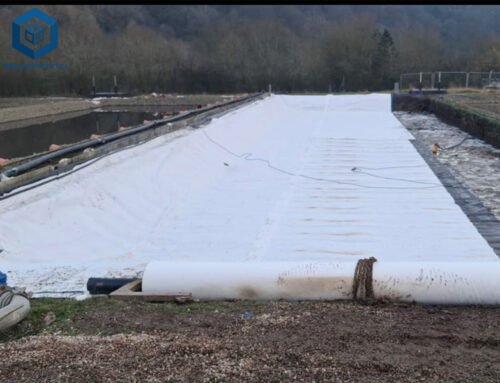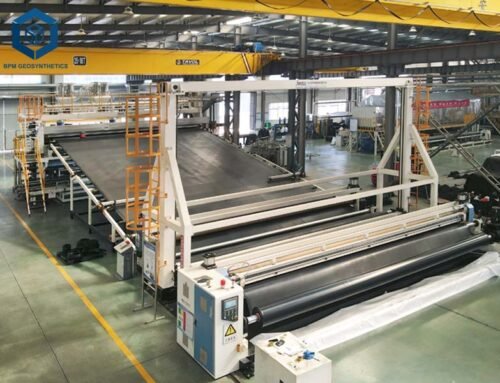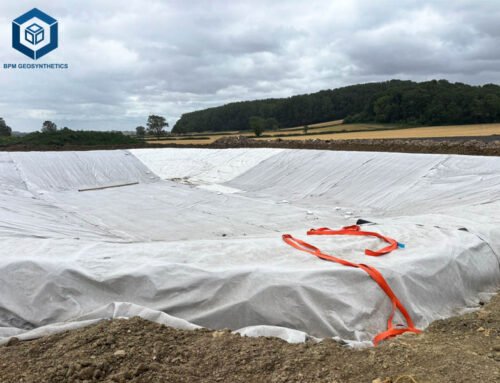Farm pond liners are indispensable geosynthetic barriers in modern agriculture, engineered to seal earthen structures against water seepage, soil erosion, and contamination. Crafted primarily from high-density polyethylene (HDPE), these low-permeability membranes (≤10⁻¹¹ cm/s per ASTM D5887) enable efficient water storage for irrigation, livestock, and aquaculture, addressing global water scarcity amid a projected 30% rise in agricultural demand by 2050 (FAO, 2024). In regions like India and the USA, where farm ponds support 40% of smallholder irrigation, liners reduce evaporation losses by 95%, per Geosynthetic Institute studies (2023).
For 2025, farm pond liner costs average $0.28–$3.00 per square foot for materials, escalating to $0.50–$5.00 per square foot installed, influenced by thickness, scale, and regional factors. A 10,000 sq ft pond in India might total $5,000–$15,000, versus $8,000–$25,000 in the USA due to higher labor rates ($20–$50/hour). Bulk purchases (>20,000 sq ft) offer 10–25% discounts, as seen with suppliers like BPM Geosynthetics in China. This guide, informed by industry data from Alibaba, IndiaMART, and HomeAdvisor, dissects these costs to empower farmers, agronomists, and contractors with actionable insights, potentially yielding 20–40% lifecycle savings through enhanced durability (20–50 years) over clay or concrete alternatives.
HDPE liners, holding 55% market share in the $2.43 billion geomembrane sector (IndexBox, 2025), outperform PVC or EPDM in chemical resistance and UV stability, minimizing annual maintenance to $300–$1,000. By optimizing selections, projects can achieve 99.9% containment efficacy, bolstering food security and ROI.
1. What Is a Farm Pond Liner?
A farm pond liner is a synthetic, impermeable sheet—typically HDPE, LLDPE, or PVC—deployed to line excavated ponds, preventing groundwater infiltration and surface evaporation while safeguarding soil integrity. Unlike permeable clay liners (hydraulic conductivity 10⁻⁶ cm/s), these geomembranes offer hydraulic conductivity <10⁻¹¹ cm/s, retaining 95–99% of stored water for extended periods. In aquaculture, they maintain pH stability (6.5–8.5) and oxygen levels (>5 mg/L), boosting yields by 20–30% (FAO, 2024).
Key Specifications and Parameters
Adhering to GRI-GM13 and ASTM standards, farm pond liners are precision-engineered for agricultural rigors:
- Thickness: 0.5–2.0 mm (20–80 mil); 0.75–1.0 mm standard for most farm ponds, balancing cost and puncture resistance.
- Tensile Strength: 20–40 kN/m (ASTM D6693), enduring 15–20 MPa stress without rupture—vital for slopes up to 3:1.
- Puncture Resistance: 1.5–8 kN (ASTM D4833), 25–40% superior to PVC, resisting roots or livestock impacts.
- Elongation at Break: 400–700% (ASTM D6693), accommodating thermal expansion (±0.1–0.2% per 10°C).
- Permeability: ≤10⁻¹¹ cm/s (ASTM D5887), ensuring <0.1% daily seepage in 5–10 ft deep ponds.
- UV Resistance: 70–90% retention after 1,600 hours (ASTM G154), extendable to 20 years exposed with stabilizers.
- Chemical Resistance: pH 2–12 tolerance, 95% inert to fertilizers/salts (EPA 9090), ideal for fertigation.
- Density: 0.94–0.97 g/cm³ (ASTM D1505), lightweight (1–2 kg/m²) for easy handling.
- Roll Dimensions: 4–8 m wide, 50–150 m long, reducing seams (5–10% cost adder) via extrusion processes.
Per BPM Geosynthetics (2025), a 1.0 mm HDPE liner withstands 50–100 freeze-thaw cycles, versus 20–30 for EPDM, extending usability in temperate climates.
Common Applications
Farm pond liners adapt to diverse agrosystems:
- Irrigation Storage: 60% of installations; retains 1–5 acre-feet, cutting pumping costs 15–25%.
- Livestock Watering: Prevents algal blooms, compliant with NSF/ANSI 61 for potable use.
- Aquaculture Ponds: Supports tilapia/shrimp yields up to 10 tons/ha, with 0.5–1.0 mm variants.
- Rainwater Harvesting: In India, lines 70% of farm ponds, per IndiaMART data.
- Erosion Control: Sloped reservoirs, textured for >30° friction angles.
Asia-Pacific adoption surged 12% YoY (McKinsey, 2024), with China’s BPM exporting to 81 countries.
[Image Placeholder: Installation of 1.0 mm HDPE Farm Pond Liner in Irrigation Reservoir]
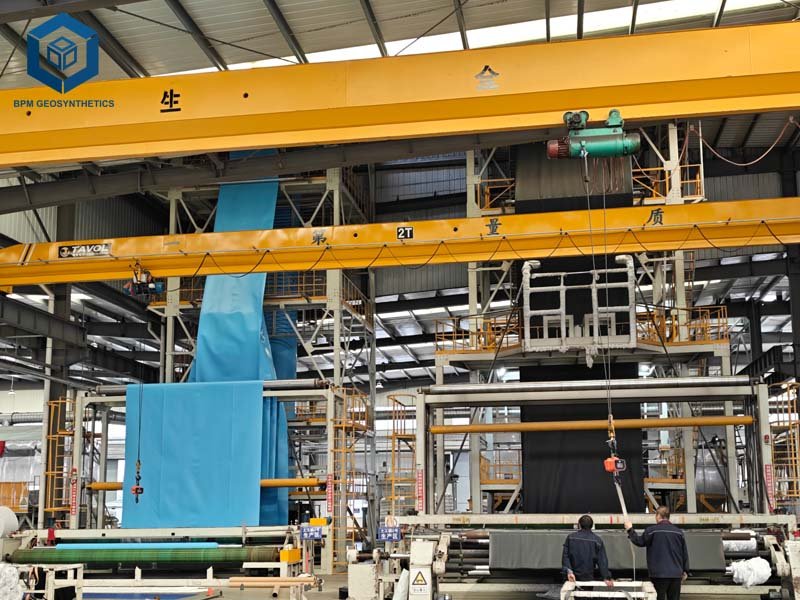
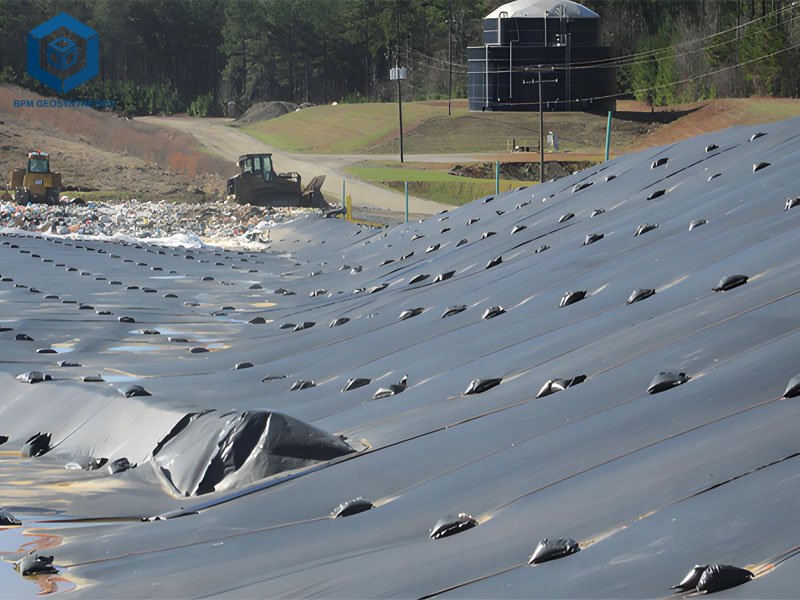
2. How Much Does Farm Pond Liner Cost?
In 2025, farm pond liner expenses span $0.28–$3.00 per square foot for materials, per Alibaba and HomeAdvisor, with installation inflating totals to $0.50–$5.00 per square foot (20–50% adder). For a 5,000 sq ft pond, materials run $1,400–$15,000; full project $2,500–$25,000. Resin volatility (up 5–8% from oil prices) drives fluctuations, but bulk from China yields $0.20–$0.50/sq ft savings. USA installations average $2–$4/sq ft (labor $30–$50/hr), India $0.50–$1.50/sq ft ($10–$20/hr).
2.1 Farm Pond Liner Cost – Material Type
Material dictates 40–60% of costs, per BPM (2025):
- HDPE: $0.50–$2.00/sq ft; 20–40 kN/m strength, 50-year buried life; 55% market share for large ponds.
- LLDPE: $0.60–$1.80/sq ft; 500% elongation, suits uneven terrain; 25% cheaper install than HDPE.
- PVC: $0.40–$1.50/sq ft; flexible but UV-weak (15-year life); for small, temporary ponds.
- EPDM: $0.75–$2.00/sq ft; rubber-like, fish-safe; higher shipping due to weight (1.2 g/cm³).
HDPE edges out for farms: 30% lower failure rate vs. PVC (Geosynthetic Institute, 2023).
[Image Placeholder: Material Cost Comparison Chart]
| Material | Cost/sq ft (2025) | Lifespan (Years) | Tensile Strength (kN/m) | Application |
| HDPE | $0.50–$2.00 | 20–50 | 20–40 | Irrigation, Aquaculture |
| LLDPE | $0.60–$1.80 | 15–40 | 15–30 | Sloped Ponds |
| PVC | $0.40–$1.50 | 10–20 | 10–20 | Small Farms |
| EPDM | $0.75–$2.00 | 20–40 | 8–15 | Livestock |
2.2 Farm Pond Liner Cost – Thickness
Each 0.25 mm increment adds $0.20–$0.50/sq ft, enhancing durability:
- 5 mm: $0.28–$0.80/sq ft; low-load aquaculture; 1.5 kN puncture.
- 75–1.0 mm: $0.50–$1.50/sq ft; standard irrigation; 100 kPa pressure tolerance.
- 5–2.0 mm: $1.50–$3.00/sq ft; heavy-duty reservoirs; 8 kN puncture, 40% extended life.
Thicker variants cut repairs 25%, amortizing over 30 years (IndexBox, 2025).
2.3 Farm Pond Liner Cost – Project Size and Scale
Scale unlocks efficiencies: <5,000 sq ft at $1.50–$3.00/sq ft (fabrication fees); >20,000 sq ft at $0.40–$1.20/sq ft (15–25% discounts). A 50,000 sq ft USA farm pond saves $10,000–$20,000 via bulk.
2.4 Farm Pond Liner Cost – Installation Method and Labor
20–50% of budget; methods vary:
- Welding: $0.30–$0.75/sq ft; 99% seam integrity; requires certified crews.
- Adhesives/Anchoring: $0.10–$0.40/sq ft; faster for small ponds but 10% higher leaks.
- Site Prep: Geotextile underlay ($0.20–$0.50/sq ft) reduces punctures 20%.
Remote sites add 15–30%; India labor halves USA costs.
2.5 Farm Pond Liner Cost – Raw Material Quality
Virgin resin: $0.50–$2.00/sq ft premium, 40–60 year life; recycled: $0.28–$1.00/sq ft, 5–15 years. Additives boost UV life 20%, per BPM.
2.6 Transportation and Logistics
$0.05–$0.30/sq ft; China (BPM) to India: 20% cheaper than USA imports. Rolls (8m x 100m) minimize handling.
2.7 Maintenance and Lifetime Costs
$200–$800/year inspections; HDPE saves 25% vs. PVC via 95% fewer repairs. Failures cost $5,000–$50,000 in refills/remediation.
3. How to Choose the Right Farm Pond Liner
Align with site demands for optimal value.
3.1 Assess Project Requirements
Irrigation: 1.0 mm HDPE ($0.80–$1.50/sq ft); aquaculture: 0.75 mm LLDPE for flexibility.
3.2 Prioritize Quality
GRI-certified virgin HDPE; NSF/ANSI 61 for fish safety.
3.3 Evaluate Installation Needs
Weld for permanence; geotextiles for protection.
3.4 Consider Long-Term Costs
Thicker liners yield 20–35% savings over 25 years.
3.5 Compare Suppliers
India (IndiaMART: $0.50–$1.50/sq ft); China (Alibaba: $0.28–$1.00/sq ft, 20% bulk); USA (HomeAdvisor: $1.00–$3.00/sq ft).
[Image Placeholder: Farm Pond Liner Deployment in Aquaculture]
4. Industry Trends Affecting Farm Pond Liner Costs
2025 sees 6–8% resin hikes, offset by recycled blends (10–15% cheaper). Wider rolls (11m) cut seams 20%; smart liners with sensors add 5% but save 15% on monitoring. Sustainability drives 25% adoption of bio-additives; Asia (China/India) undercuts USA by 30–40%.
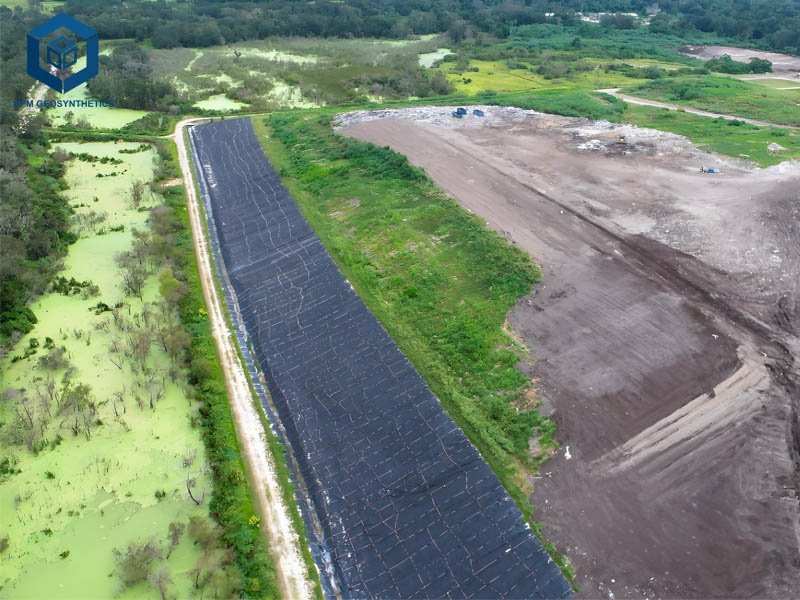
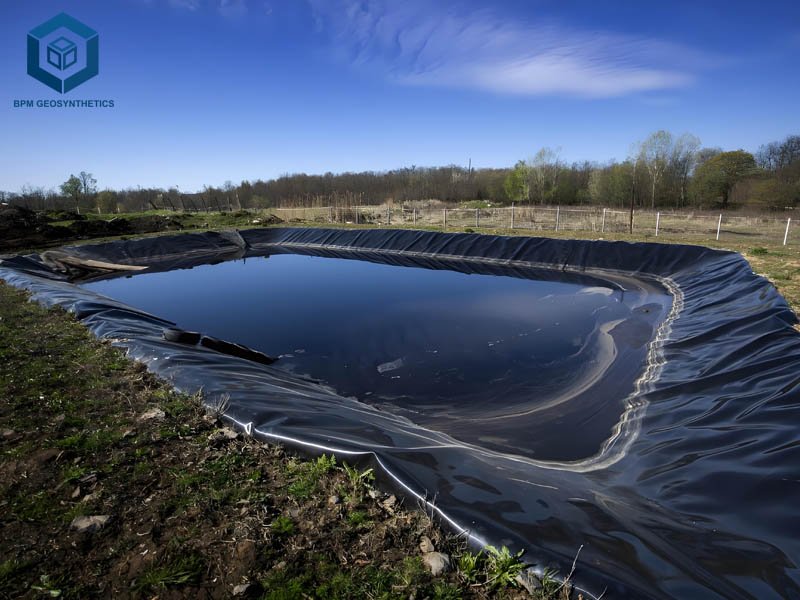
5. Case Studies: Real-World Farm Pond Liner Projects
5.1 Case Study 1: California Aquaculture Farm (BPM Geosynthetics, 2024)
20,000 m², 1.0 mm HDPE. Cost: $0.80–$1.20/sq ft materials + $0.50/sq ft install = $28,000 total. Savings: 15% ($10,000) vs. EPDM; 99% retention, averting $50,000 water loss annually.
5.2 Case Study 2: Philippines Fish Farm (BPM, 2024)
10,000 m², 0.75 mm HDPE. Cost: $0.50–$0.90/sq ft = $8,000. Benefits: 25% yield boost (tilapia); 20-year life vs. clay’s 5, saving $15,000 in rebuilds.
5.3 Case Study 3: Indian Irrigation Reservoir (IndiaMART Supplier, 2025)
50,000 m², 1.0 mm LLDPE. Cost: ₹40–₹80/sq m ($0.48–$0.96/sq ft) = $24,000. Savings: 30% water efficiency, ROI in 2 years via $20,000 crop gains.
These exemplify 15–30% reductions in operational costs.
6. Conclusion
Farm pond liners cost $0.28–$3.00/sq ft materials, $0.50–$5.00/sq ft installed in 2025, but HDPE’s specs—40 kN/m strength, 50-year durability—deliver superior ROI. Opt for 0.75–1.0 mm virgin variants for balanced performance; suppliers like BPM offer bulk edges. Tailor to needs for leak-proof, sustainable agriculture—contact BPM Geosynthetics for quotes today.



